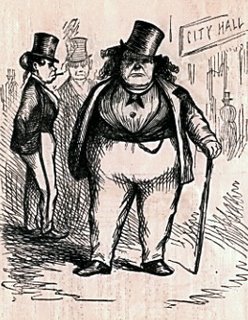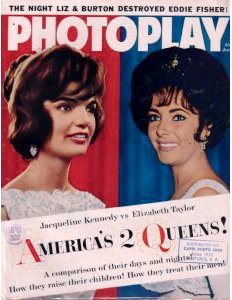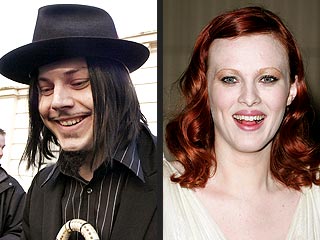The Pizza Huts of East Asia

Osutein-sensei's
Definitive Guide
A few years ago my family and I were perusing Blockbuster and came across a movie called The Accidental Tourist. We rented it, mainly because there was a picture of a Welsh corgi on the cover and we have a Welsh corgi and owning a Welsh corgi makes you do lame stuff like that. Contradicting Freud's theories about the existentially horrific idea of a doppleganger, Welsh corgi owners spend an unhealthy amount of time searching for images of other Welsh corgis that resemble their own, usually culminating in one shouting "it looks just like our dog!", much in the same way some Catholics keep finding the Virgin Mary hiding in breakfast pastries.
The Accidental Tourist turned out to be disappointing in this regard, as the dog in the movie didn’t appear to be an uncanny genetic duplicate of ours, after all. However, the movie proved entertaining nonetheless. William Hurt stars as the kind of overly cautious man only a free-spirited woman could love. Hurt makes his money by writing a series of travel guides called The Accidental Tourist, which serve as a kind of anti-Lonely Plant for the lazy and xenophobic. They detail all the McDonald's and Holiday Inns the world has to offer, so one can go to Paris, France, and feel you've never left Paris, Texas.
When I first watched the movie I reacted as I was supposed to: I thought a man who spends his time traveling abroad eating at American fast food joints is pathetic, and is indicative of his inability to truly experience life. However, after having lived on a remote island off the coast of Japan for nearly two years, and spending most of my meals eating variations of squid, suddenly the idea of a series like The Accidental Tourist seems like a great idea. But as no such books actually exist, I will have to invent them, much as Voltaire invented God simply so he could make pithy aphorisms about Him. As space is limited, I will begin with the Holy Grail of the Far East's Western offerings: Pizza Hut.
Now, those of you in the States may be wondering "Why Pizza Hut?" In America, Pizza Hut is passe, but then in America you can't walk ten feet without stumbling across a pizza restaurant that would never dream of putting corn and mayo on pizza. You don't ask a man crawling through the Sahara why he's drinking bilge water, nor should you ask an expat in Asia why he's eating Pizza Hut. They put corn and mayo on pizza here. Corn and mayo! If God doesn't exist, then we shall have to invent Him just so He can declare that to be an abomination in the face of Himself.
However, not all East Asian Pizza Huts are created equal. Surprisingly, communism seems to produce a better quality Pizza Hut than capitalism, or perhaps it's just repressive government. Either way, the best Pizza Huts are to be found in...
1.) The People's Republic of China
Clocking in at 6,000 years and still going strong, China makes all other civilizations look petty, what with its
4,000 mile-long walls and convenient white take-out cartons. China also has the world's best Pizza Huts. The menu is generally devoid of strange local experiments, interiors are cozy and nice, with wide booths and low lighting. It's almost pseudo-classy. Eating in a PRC Pizza Hut lets you live the way the rich European merchants in Shanghai in the 19th century lived: eating delicious food in a nice atmosphere identical to home while countless millions toil in obscene poverty so you can have this privilege you'll just take for granted anyway. Somehow, it just makes the double pepperoni tastier.
While Beijing and Xi'an have good Pizza Huts, Shanghai's are the crème de la crème, with the Pudong Pizza Hut, looking out over the Yanghtze River to the Bund, being to Pizza Huts what the Forbidden City is to houses.
2.) South Korea
Granted, I have only sampled the Pizza Hut in Pusan, but my sources tell me the Seoul Pizza Hut is equally as good. The interiors aren't as nice as your standard PRC Pizza Hut, but they're still quite pleasant, though a little too bright. The menu is somewhat limited, although the Koreans have slipped in a few surprises, like a Kimchee pizza. Normally, local variations are highly frowned upon, but Kimchee pizza is actually quite good, providing the extra kick without the Tabasco, and allows you to say you ate Korean food while in Korea without ever leaving the comforting confines of Pizza Hut.
3.) Hong Kong
The Kowloon Pizza Hut is much like the PRC branches, though whether its always been this way or has simply been updated since the handover in '97 remains unknown. Regardless, it's very nice inside. The problem comes with the menu, which has only one or two pizzas suitable to the average cheese-starved expat. Aside from the pepperoni and the supreme, most of the rest are horrific blends of pizza and Asian food, with corn, mayo, and seafood aplenty tossed in for good measure. Hong Kong may well be where East meets West, but that's no excuse for sweet-and-sour shrimp and corn pizza.
4.) Taiwan
Taiwan's Pizza Huts are much like American ones: somewhat ghetto, filled with children run-amok, and with a pizza buffet, which like declining morals and locusts usually signals a civilization in decay. Still, the menu is better than in Hong Kong. However, serious points are lost due to the staff's endless attempts to sell you on the buffet, even when you insist on a normal pizza. Also, they never refill your damn drinks. The Taipei Pizza Hut is nice enough, but the Hualien Pizza Hut makes me do something I almost never do: recommend you skip it. If Franz Kafka wrote a story about a Taiwanese Pizza Hut, it would be about the one in Hualien. I'd go into detail, but to do so would only bring me confusion, despair, and the sickness unto death.
5.) Japan
While there are rumors of actual Pizza Hut restaurants in Japan, thus far I have only encountered delivery shops, and only in major cities, and they don't deliver to street corners even when you approach the delivery drivers and tell them you'll wait for them. This, of course, puts Japan at the bottom of this list, though it's still number one in the world for vending machines that sell used school girl panties. And that's gotta count for something.
Anyway, I hope you will find this list helpful. As I travel more, I will update, so that whether you're trekking through the Himalayas or sunning on a beach in Thailand, you'll always know where to find that golden, doughy, cheesy slice of Americana known as Pizza Hut.
Labels: Osutein-Sensei
Read more!













